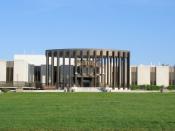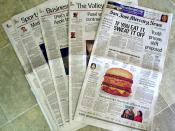Overview:
During the 1990s the sale of sports-utility vehicles (SUVs) increased six times. Ford produced an 8,500 pound, 6.5 foot wide, 7-foot high, 19-foot long gargantuan SUV dubbed the Excursion to meet the insatiable consumer demand. The motor company anticipates 50,000 to 60,000 sales a year, and at a retail cost between $40,000-$50,000 and a profit margin of around $20,000 the company stands to reap enormous profits. However the 44-gallon, nine-passenger vehicle achieves a pitiful 10-15 miles per gallon. Ford on the other hand boasts that the Excursion pollutes 43% less than the worst polluter in its class, and 20 % of the vehicle originated from recycled materials, while 85% of the total vehicle is recyclable. In fact Ford's CEO, vowed in 1998 to make the company, "the world's most environmentally friendly auto maker." Environmentalists sight the hypocrisy in this statement, since the average Excursion will emit 130 tons of carbon dioxide, the predominant source of greenhouse gases that perpetuate global warming, and may impel manufacturers to produce even bigger vehicles.
Environmental Implications
When fossil fuels such as oil are burned they release a gas called CO2 into the atmosphere. The U.S. is the world' s largest polluter, having produced 186.1 billion tons of CO2 emissions since 1950, and now emits 16-36 billion tons each year; put another way, the U.S. makes up 4% of the population, yet is responsible for 25% of greenhouse gases (TIME, 2001). The result of our exuberant and obsessive consumption of fossil fuels has resulted in environmental changes that often result in catastrophe. A United Nations coalition consisting of hundreds of top scientists concluded that carbon dioxide emissions are trapping the sun's heat, which results in hotter temperatures and extremely abnormal variations in our weather patterns (San Jose Mercury News, 2001).


